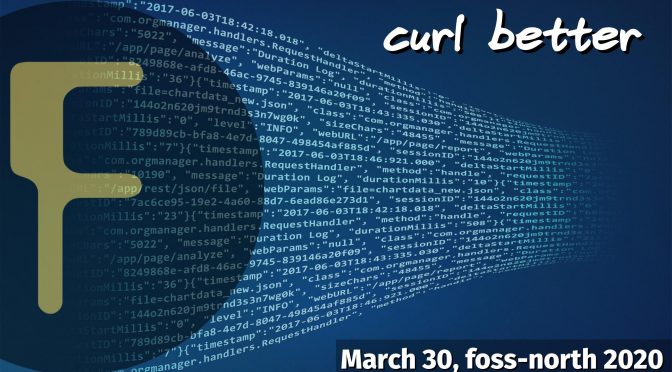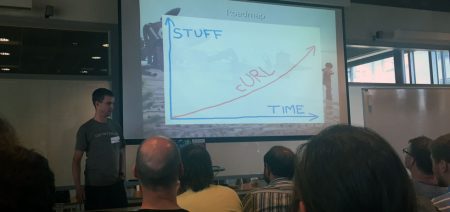As so many other events in these mysterious times, the foss-north conference went online-only and on March 30, 2020 I was honored to be included among the champion speakers at this lovely conference and I talked about how to “curl better” there.
The talk is a condensed run-through of how curl works and why, and then a look into how some of the more important HTTP oriented command line options work and how they’re supposed to be used.
As someone pointed out: I don’t do a lot of presentations about the curl tool. Maybe I should do more of these.
curl is widely used but still most users only use a very small subset of options or even just copy their command line from somewhere else. I think more users could learn to curl better. Below is the video of this talk.
Doing a talk to a potentially large audience in front of your laptop in completely silence and not seeing a single audience member is a challenge. No “contact” with the audience and no feel for if they’re all going to sleep or seem interested etc. Still I have the feeling that this is the year we all are going to do this many times and hopefully get better at it over time…



